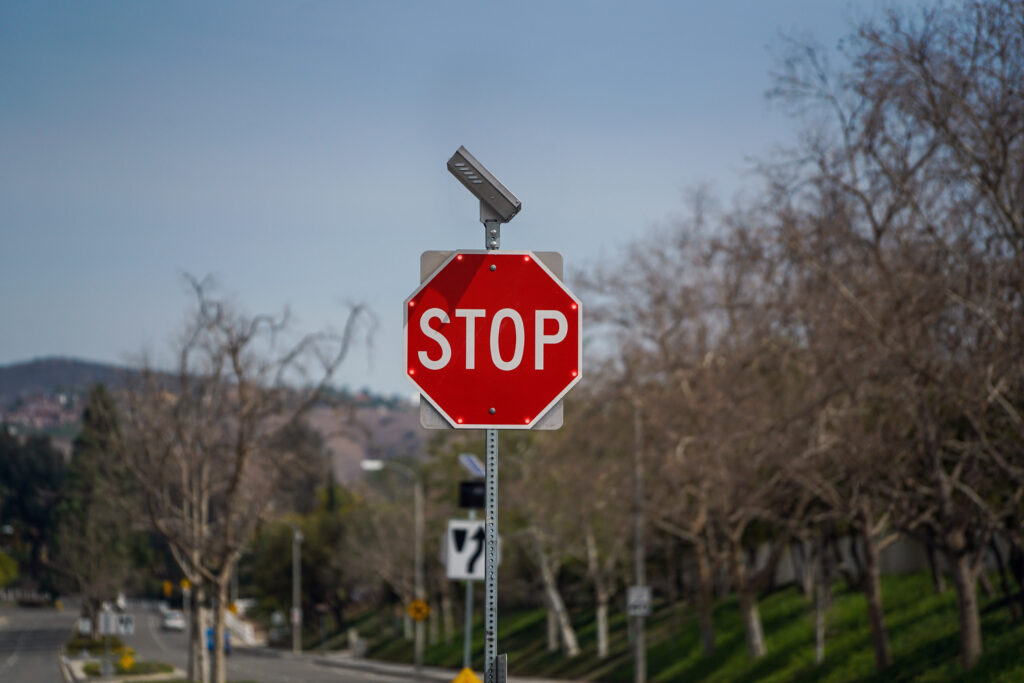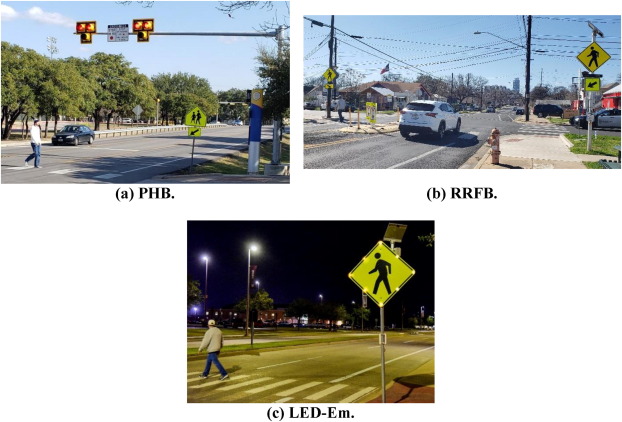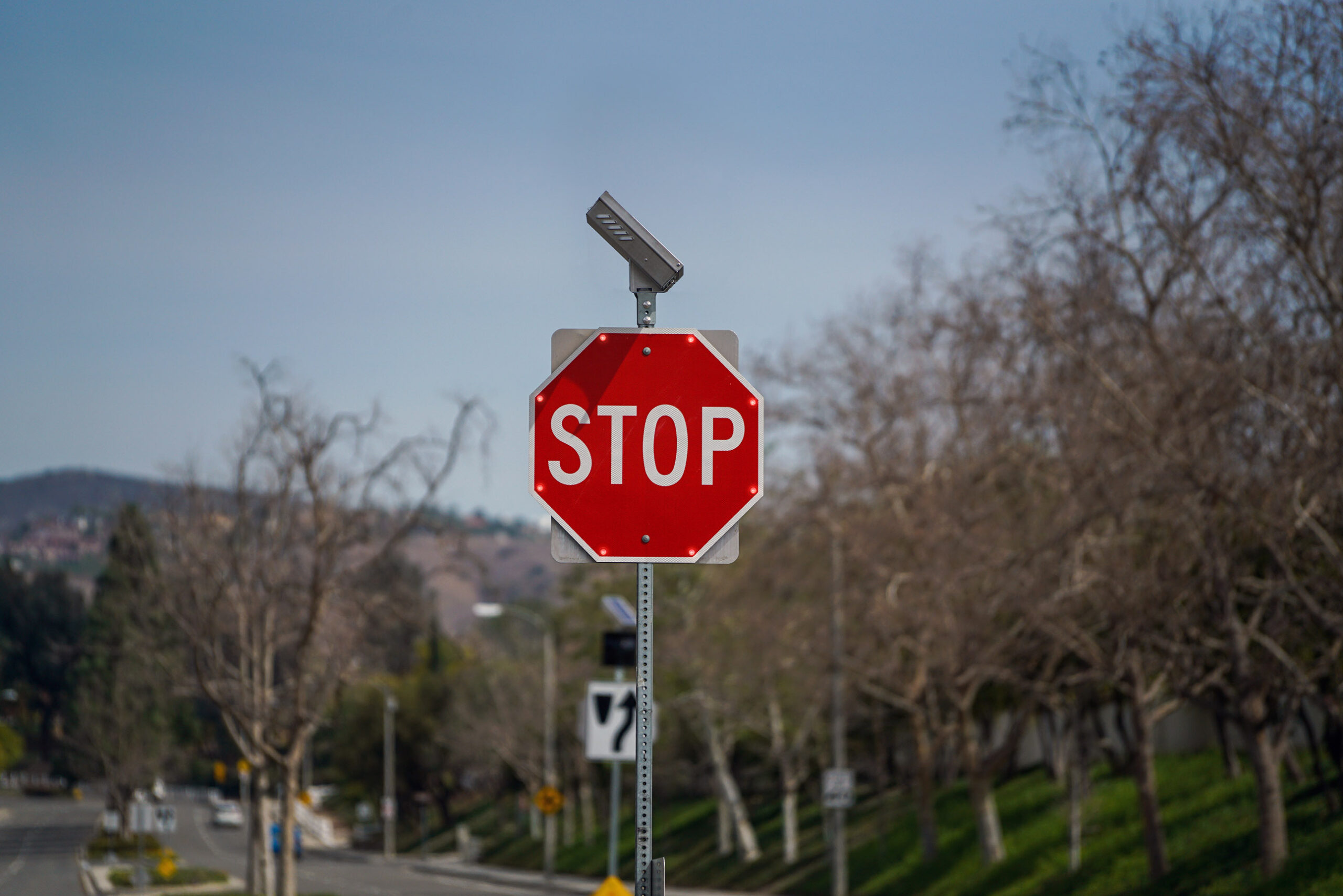Here’s a sobering thought: Every time we leave the house, whether by car, bus, bicycle or on foot, our lives depend on people seeing and obeying traffic signs. We count on drivers to stop at stop signs, slow down in school zones, and turn left (and right) at intersections where it is legal and safe to do so.
But we know that a lot of the time, they don’t. Whether by honest mistake, distraction, impairment, or a split-second decision to chance it, people ignore traffic signs all the time—often, to deadly consequences. In 2022, 1 142 people in the U.S. were killed by drivers running red lights and stop signs.
Fortunately, there are things we can do to reduce this deadly toll. Among the most effective and affordable are LED enhanced signs, which use LEDs embedded in the perimeter of regulatory, warning, and stop signs to boost driver awareness and compliance.
What follows are answers to some of the top questions we receive about LED signs, backed by the latest research from the FHWA, state DOTs, and research institutes.
Where should I put LED enhanced signs?
 LED enhanced signs can be used across a range of applications, including stop-controlled intersections, crosswalks, and highway ramps. However, as with any traffic control device, they should be deployed strategically and sparingly, as overuse can decrease their effectiveness (as well as of similar static signs).
LED enhanced signs can be used across a range of applications, including stop-controlled intersections, crosswalks, and highway ramps. However, as with any traffic control device, they should be deployed strategically and sparingly, as overuse can decrease their effectiveness (as well as of similar static signs).
The FHWA suggests that LED-embedded signs may be most useful at locations with sight distance limitations or “documented problems of drivers failing to recognize an intersection.” The Transportation Association of Canada also recommends placing them “at locations where a sign is not expected,” such as at or ahead of a new crosswalk.
Just how effective are they?
The most studied application for LED enhanced signs to date is stop signs, which have consistently been shown to dramatically improve driver compliance. A Texas Transportation Institute (TTI) study found a 28.9% reduction in the number of vehicles not fully stopping and a 52.9% reduction in the number of vehicles moving through the intersection without significantly slowing.
Other studies have also investigated the effect of LED enhanced stop signs on crashes, with one conducted by MnDOT finding a 42% decrease in right-angle crashes after they were installed. Another by the Virginia Tech Research Council found a 2.7 mph (or 7%) decrease in vehicle approach speeds, indicating “that LED STOP signs positively affected driver behavior.”
How do LED enhanced signs stack up against RRFBs and PHBs?
 Although fewer studies have been done on using LED enhanced signs for other applications, a 2021 study did look at pedestrian-actuated crosswalks, comparing sites that used LED enhanced signs, RRFBs, and PHBs (pedestrian hybrid beacons).
Although fewer studies have been done on using LED enhanced signs for other applications, a 2021 study did look at pedestrian-actuated crosswalks, comparing sites that used LED enhanced signs, RRFBs, and PHBs (pedestrian hybrid beacons).
Researchers found good support for all three countermeasures; however, some were more effective than others under certain conditions. For example, RRFBs were found to be more effective at getting drivers to yield at night, while LED enhanced signs were more effective during the day—possibly due to the brighter LEDs used in RRFB lightbars.
LED enhanced signs were also found to be most effective at sites with lower traffic volumes, slower speeds (under 45 mph), fewer and narrower lanes (11 feet or less), and sidewalks. Researchers cautioned against using them on high-speed, multilane roadways, recommending the PHB instead.
What does the MUTCD say about LED enhanced signs?
In the MUTCD 11th edition, the use of LED lights around a sign face is addressed in section 2A.12, ‘LEDs Used for Conspicuity Enhancement on Standard Signs.’ This standard specifies the following colors for particular signs:
- White or red for STOP, YIELD, DO NOT ENTER, or WRONG WAY signs.
- White for other regulatory signs.
- White or yellow for warning signs.
- White or green for guide signs.
- White, yellow, or orange for temporary traffic control signs.
- White, yellow, or fluorescent yellow-green for school area, pedestrian, or bicycle warning signs.
When LED lights flash on a sign, all LEDs must flash at the same steady speed, between 50 to 60 times per minute. LED lights within a sign must all turn on and off together; they cannot flash in a sequence or at different speeds, except in specific cases allowed by the rules in this Manual. Additionally, LED clusters are not allowed within the edge of a sign. For STOP or YIELD signs with flashing LEDs, the lights must flash continuously once activated. Actuation of the LED units shall not be allowed.
>>>Get in touch with our sales team
>>>Explore Carmanah’s solutions for LED stop signs, crosswalks, school zones, and wrong way
